► New Continental GT Speed features PHEV power
► 771bhp from mighty V8 hybrid, 50-mile e-range
► Flagship version kicks off heavily revised GT
Welcome to the most powerful production Bentley ever made: the new, plug-in hybrid Continental GT Speed coupe and GTC convertible.
The brand says this is the fourth-generation Continental GT. Treat this like a major overhaul of its predecessor with a whole load of new technology introduced, and a major heart transplant undertaken.
Bentley’s grand tourer is designed to be a thumping haymaker of a car, offering ferocious power and luxury. Hence why the heavily-revised Continental GT is launching with the flagship Speed variant first: to ram that point home. ‘The Speed embodies the best of what the Conti GT is all about,’ Ian Hoban, Chief Product Strategy & Delivery Officer tells CAR; ‘the Continental GT is the core of the Bentley brand and the Speed is the core of the GT brand. We’ve got to be bold.’
And bold Crewe has been, reaching new heights of power and customisation not seen before for a non-special-edition Bentley.
Come on then, tell me about that new powerplant
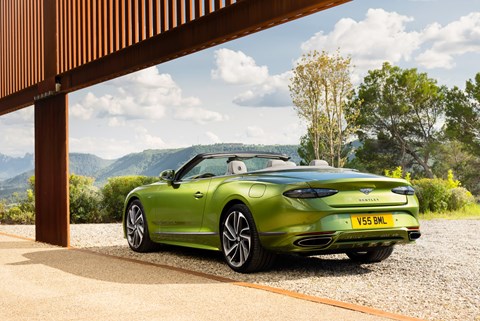
Bentley says the new Speed is the brand’s ‘most powerful road-going model ever created.’
The base of it is a redesigned 584bhp 4.0-litre twin-turbo V8 that now features twin single-scroll turbochargers – which are boostier and laggier than twin-scroll ones, as well as being more durable and less complicated – as e-power fills in the turbolag gaps. A single 188bhp electric motor is applied, housed within the transmission to ensure e-power is available and applied even during gearchanges, and a 25.9kWh battery pack is mounted behind the rear axle.
Naturally, given the Continental GT shares a base architecture with the Porsche Panamera, Bentley’s nicked the new Porsche four-door’s battery pack wholesale. But this ‘Ultra Performance Hybrid’ powertrain from Bentley is more powerful than the current (for now) flagship Panamera Turbo E-Hybrid. Total system output for the Continental GT Speed is 771bhp and a mighty 738lb ft, good for propelling 2459kg-worth of plug-in hybrid Bentley coupe to 62mph in 3.2sec, to 100mph in 6.9 seconds and on to a top speed of 208mph.
In an effort to properly test the GT Speed’s performance, Bentley ran tests through Ryfylke Tunnel in Norway. Not only did this provide the location for clocking that immense top speed, but Bentley logged that it took the GT Speed coupe just 33 seconds to reach it.
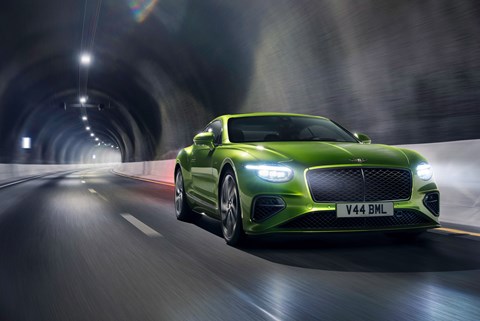
The GTC convertible model logs a 0-62mph sprint in 3.4sec and a limited top speed of 177mph.
Christophe Georges, Bentley’s global sales and marketing director, tells us that Bentley clientele are happy to buy a hybrid ‘so long as they can see a benefit.’ It also shows us another reason why the Speed needed to be first out of the gate: it had to move the game on, and clearly, from its predecessor that used the W12 engine. The fact that this new GT Speed is 11 per cent more powerful and has 19 per cent more torque is testament to that.
It’s a bonus that Bentley claims this mighty GT is capable of up to 50 miles of electric-only range, and allows the GT Speed to surge silently on the road at up to 87mph. Charging takes around two and a half hours on an 11kW charger.
Is it just about power?
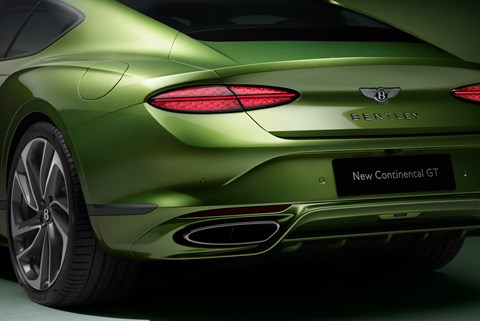
Nope. The new GT is still armed to the teeth with physics-bending engineering, including the brand’s new ‘Performance Active Chassis.’ That bundles together all-wheel drive, an electronic limited-slip differential, rear-wheel steering, all-round torque vectoring, active anti-roll technology.
Given the inherent Porsche DNA in the Conti GT’s architecture, Bentley has applied the new dual-valve dampers that launched on the Panamera and electric Macan into the dual-chamber air suspension. Bentley says using these means a wider bandwidth between cushy, plush comfort and harder, tauter sport suspension setups.
What’s new about the look?
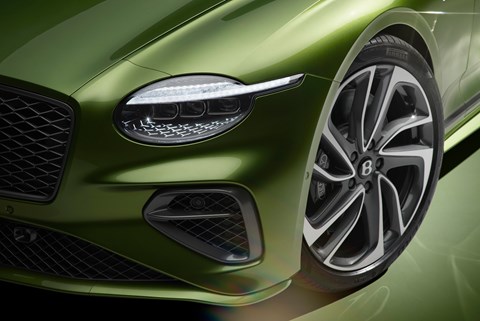
Naturally, a lot of the design is very familiar – remember that the new-generation GT is a heavy overhaul of its predecessor, rather than a ground-up engineering project. Even so, some of the details have changed; the updated Conti GT now features single headlights – something Bentley says hasn’t been seen on a ‘mainstream, non-coachbuilt Bentley until the S2 of 1959’ – and the design of the clusters themselves echo the Bacalar and Batur. There are new wheel designs and, at the rear, Bentley says no rear spoiler is needed despite that ferocious 208mph top speed due to the shaping of the tailgate.
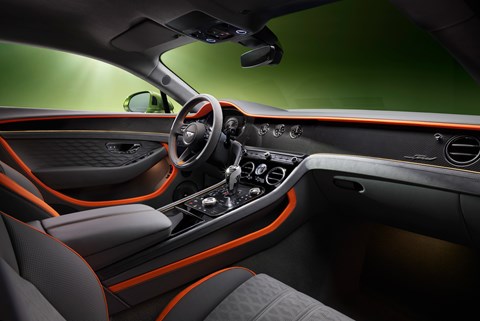
Take a quick glance inside and you’ll probably think nowt’s changed and, in reality, the structure of the cockpit certainly hasn’t. But that’s far from a complaint, and Bentley has focused on improving the amount (and, indeed, the sophistication) of the technology offered. As well as a new-generation infotainment and digital instruments with a suite of new digital services, Bentley’s promising regular updates to the technology including ‘traffic light prediction’ technology first seen in Audis in very select locations.
When can I order one?
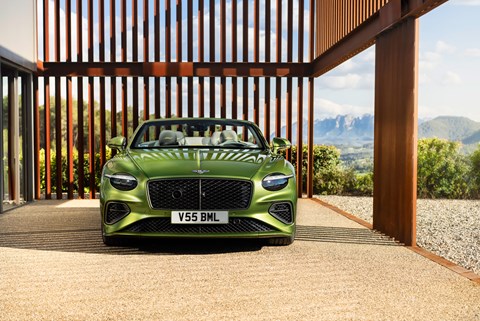
Now, effectively. Naturally, because it’s a Bentley, there is ‘virtually limitless’ scope for personalisation and configurations. GT Speed model deliveries will commence in September in the UK, arriving a little later in North American and Chinese markets.
Other derivatives – likely ones like wellness-focused Azure and sporty S echoing the Bentayga – will launch in 2025 and beyond. CAR understands that every version of this new-gen GT will have some sort of electrification going forward, and that the Speed will remain the flagship. Those hoping for a new-generation Supersports will have to keep that candle burning a little longer.